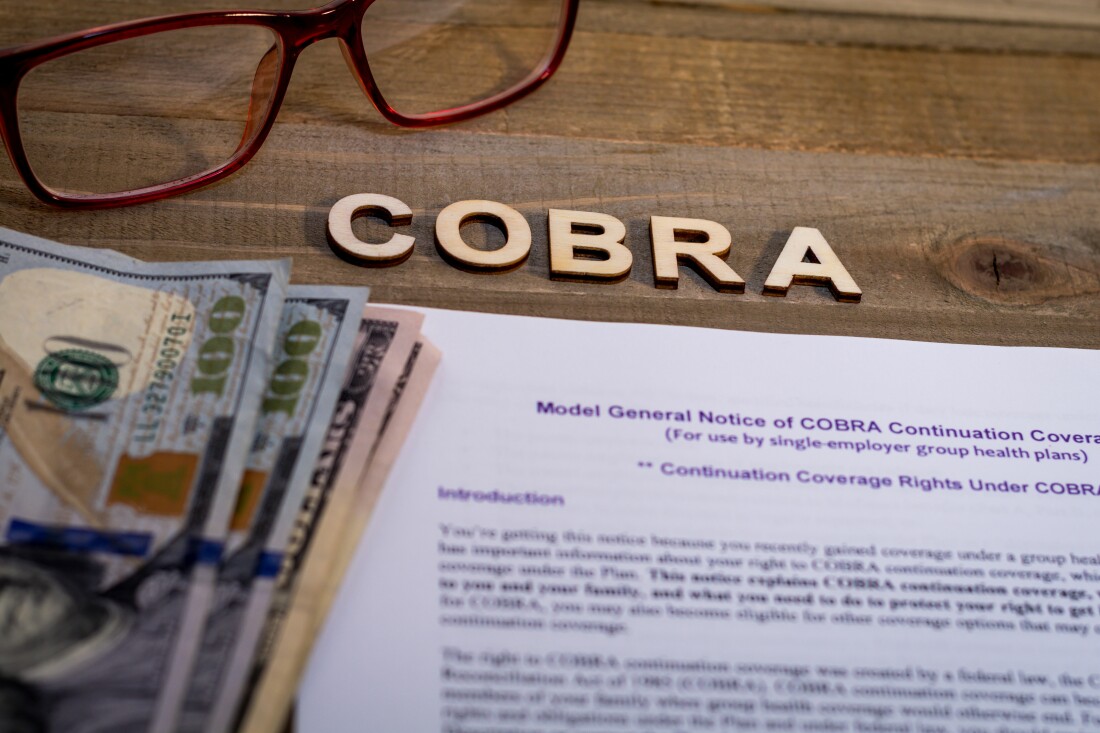Recent IRS Guidance and Clarification for the COBRA Subsidy Imposed by ARPA
 In March of this year, the American Rescue Plan Act (“ARPA”) was enacted. A piece of that legislation included a 100% COBRA subsidy for certain assistance eligible individuals (“AEIs”). The subsidy period began on April 1, 2021 and extends through September 30, 2021 (the “Subsidy Period”). The legislation also provides that employers will be required to pay for the COBRA coverage upfront and will thereafter be entitled to a refundable tax credit against their quarterly Medicare taxes.
In March of this year, the American Rescue Plan Act (“ARPA”) was enacted. A piece of that legislation included a 100% COBRA subsidy for certain assistance eligible individuals (“AEIs”). The subsidy period began on April 1, 2021 and extends through September 30, 2021 (the “Subsidy Period”). The legislation also provides that employers will be required to pay for the COBRA coverage upfront and will thereafter be entitled to a refundable tax credit against their quarterly Medicare taxes.
The Department of Labor ("DOL") issued FAQs related to the new subsidy rules in early April, and the Internal Revenue Service (“IRS”) issued guidance in mid-May in the form of a notice that includes a series of Q & As (the “Notice”). The Notice provides information about how employers can pay the subsidy and later claim the tax credit, who is an AEI, how to calculate the credit, and more. Below we highlight portions of the latest IRS guidance.
Qualifying Events
The ARPA requires that employees who have a reduction in hours or who are involuntarily terminated must be permitted to elect the COBRA subsidy. The Notice addresses some questions that have arisen about an involuntary termination or reduction in hours that follows another qualifying event (such as divorce). The Notice states that if COBRA continuation coverage is based on a qualifying event other than a reduction in hours or involuntary termination of employment, the later reduction in hours or involuntary termination of employment of the employee does not cause a loss of coverage, and the qualified beneficiary therefore does not become a potential AEI.
Involuntary Termination
The Notice also provides guidance about what constitutes an involuntary termination of employment for AEIs. The Notice states that an involuntary termination of employment means a severance from employment due to the “independent exercise of the unilateral authority of the employer to terminate the employment, other than due to the employee’s implicit or explicit request, where the employee was willing and able to continue performing services.” The determination of whether an employee’s termination was “voluntary” will be determined through a facts and circumstances analysis. The Notice provides several examples that illustrate the facts and circumstances analysis.
Self-Certification and Attestation Records
The Notice also provides guidance about how to ensure that employees who receive the subsidy are in fact AEIs. An employer may permit its employees to self-certify or attest that they are eligible for the subsidy. If an employer uses this approach, it must maintain such records of attestation to substantiate the individual's eligibility for the premium assistance.
Coverage Extension
The Notice clarifies that an individual who experiences an extension of coverage due to a second qualifying event will be permitted to elect the subsidy for the extended COBRA period of coverage as long as (i) his or her initial COBRA period of coverage was due to a reduction in hours or an involuntary termination; and (ii) the extended eligibility period falls within the subsidy period.
The Notice makes clear that there are several questions which have arisen after the passage of the ARPA. If you have questions about specific employees and circumstances related to the COBRA subsidy, please contact one of the authors of this article.
Authors:
Mindi M. Johnson...616.726.2252...mjohnson@fosterswift.com
Julie LaVille Hamlet...616.796.2515...jhamlet@fosterswift.com
Amanda J. Dernovshek...517.371.8259...adernovshek@fosterswift.com




